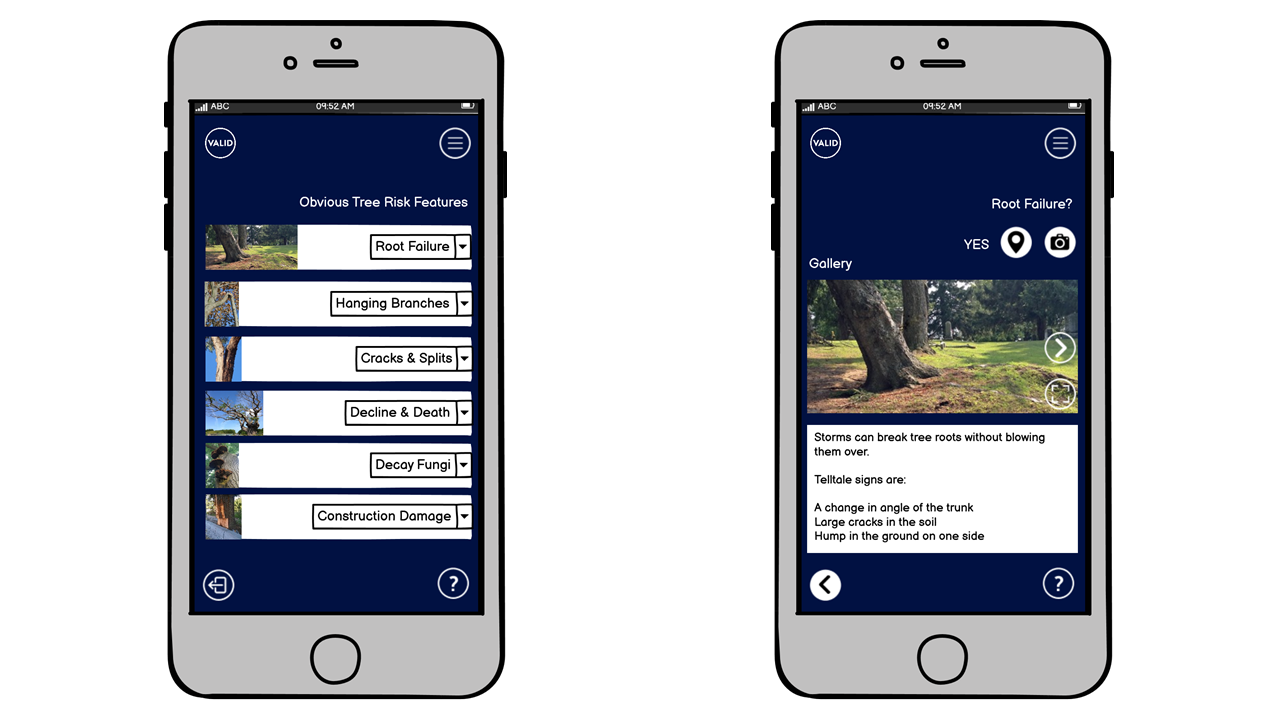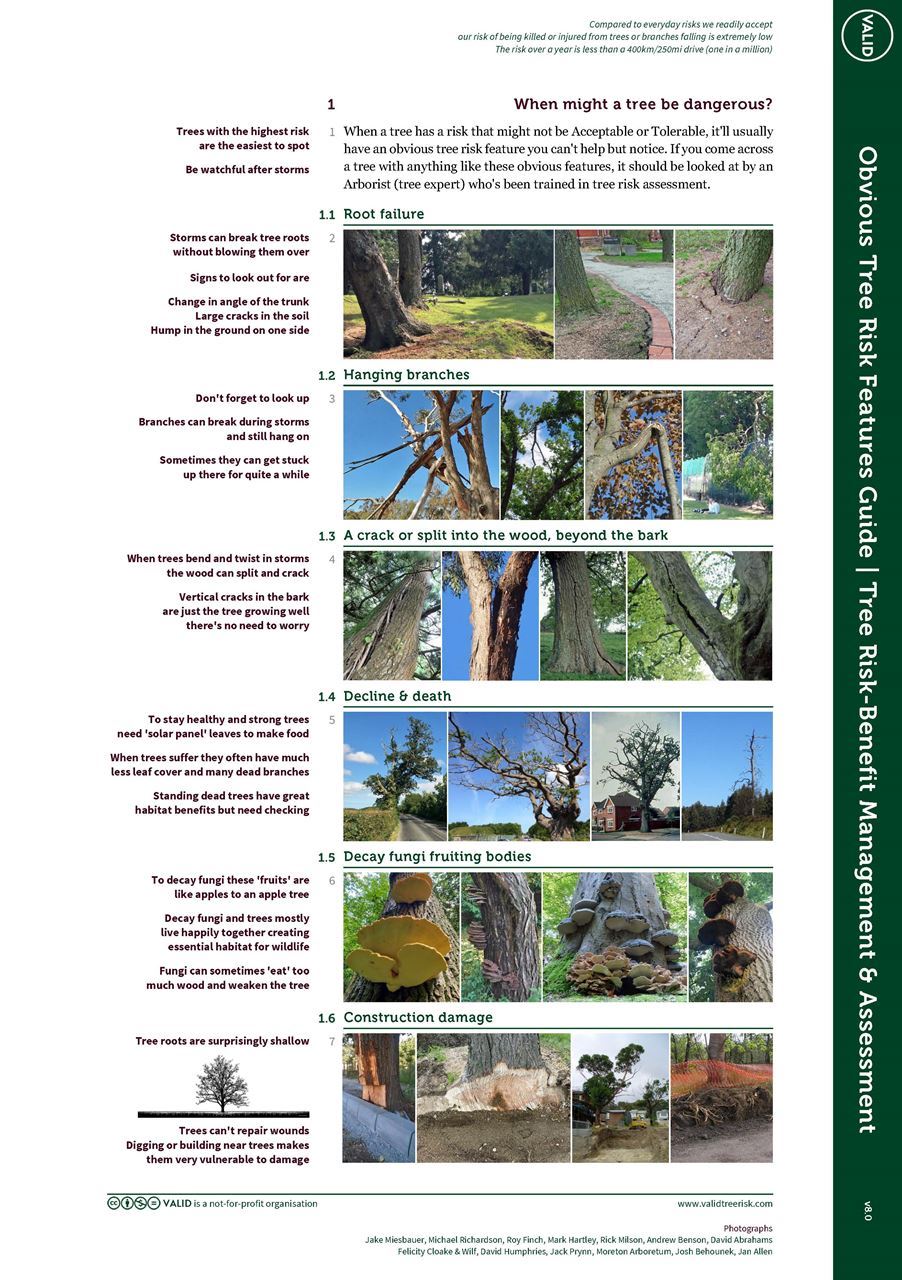Can you help everyone manage tree risk?
We're after high quality obvious tree risk feature photos for a free multi-language App we're developing called Tree Alert. Full credit will be given to you as the photo source.
What is Tree Alert?
It's an App version of the free 'Obvious Tree Risk Features Guide.'*
Here are a couple of rough wireframe sketches to show you how it's looking in development.

We're after high quality photos of
1) Partial root failure
2) Broken or hanging branches
3) Cracks or splits
4) Advanced decline or death
5) Fungal brackets (an abundance of them)
6) Construction damage
As you'll see from the Guide, they need to VERY obvious.
If you can help by sharing any of these photos, please email them to admin@validtreerisk.com
Why?
Trees with the highest risk are the easiest to find.
When a tree has a risk that might not be Acceptable or Tolerable, it'll usually have an obvious tree risk feature that you can't help but notice.
High volume, low effort, citizen science tree risk assessment is most likely to pick up 'red risk' trees before any scheduled visit from a trained Arborist carrying out 'Active Assessment.'
In VALID's free Tree Risk-Benefit Management Strategies, this is called 'Passive Assessment'. Passive Assessment is a duty holder's most valuable risk management asset because it can be done by anyone and it's going on day in day out.
How?
Tree Alert will be used by your clients and members of the public, or Basic Validators, to alert duty holders or contact Arborists that they've seen a tree that might be 'dangerous'. The Tree Alert user will be able to check what they're looking at against a rogue's gallery of obvious tree risk features. If it matches one of them, they geolocate the tree and take several photos of the tree in its setting, and of the obvious tree risk feature.
The duty holder or contact Arborist will then get an alert with where the tree is and photos. A trained Arborist can then swipe right if they 'fancy' the tree and it needs a closer look, or swipe left if they reject the alert because it's not an obvious tree risk feature. Each alert will produce a brief photographic driven one-side report that will stand as a record of the alert.
*Obvious Tree Risk Features Guide. You can download and share the guide with your clients from the Risk Management page of our website.
Obvious Tree Risk Features Guide


.png)